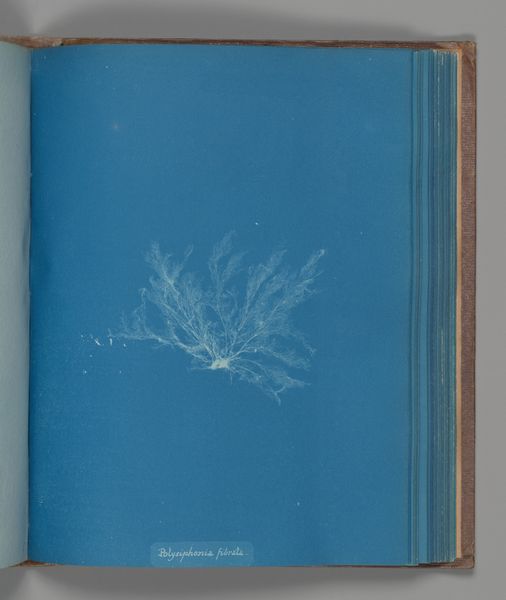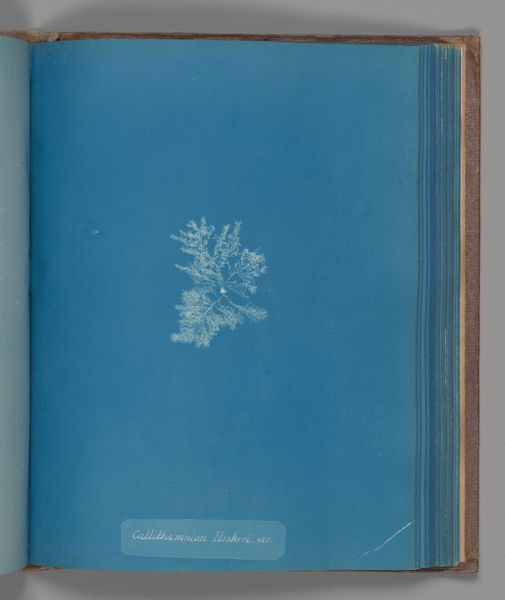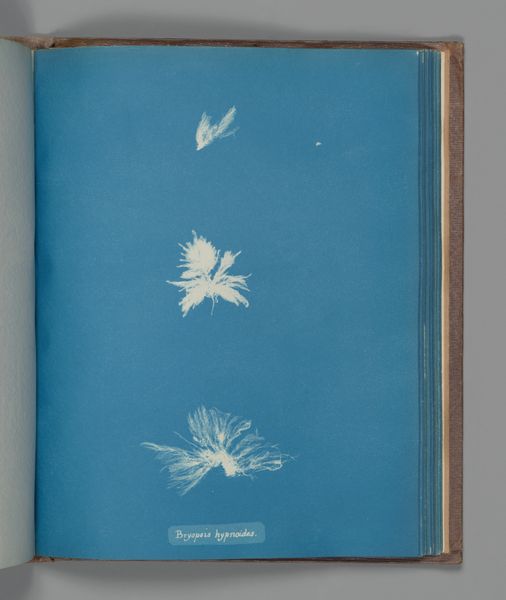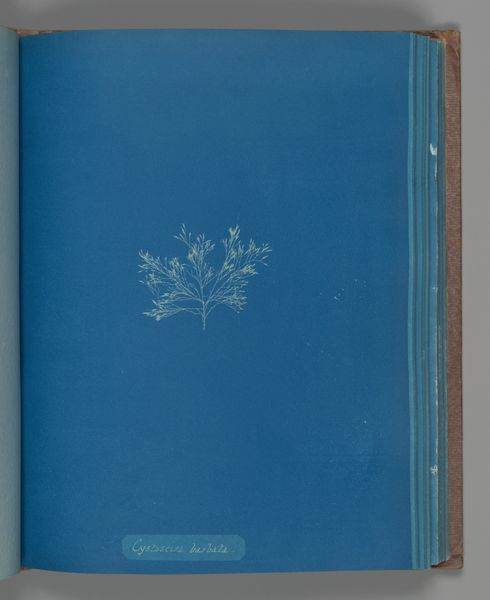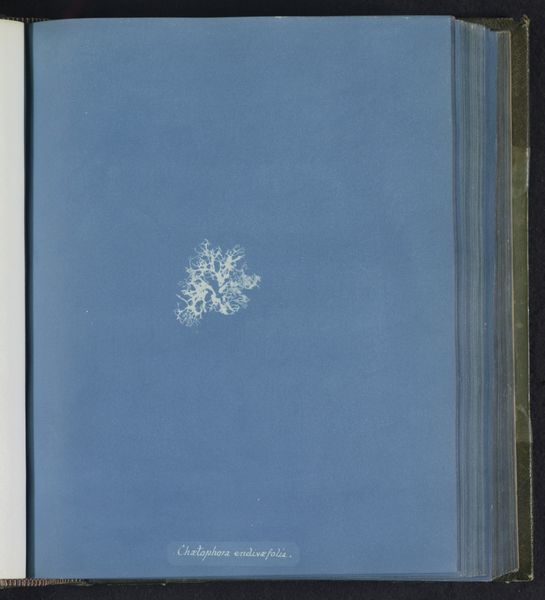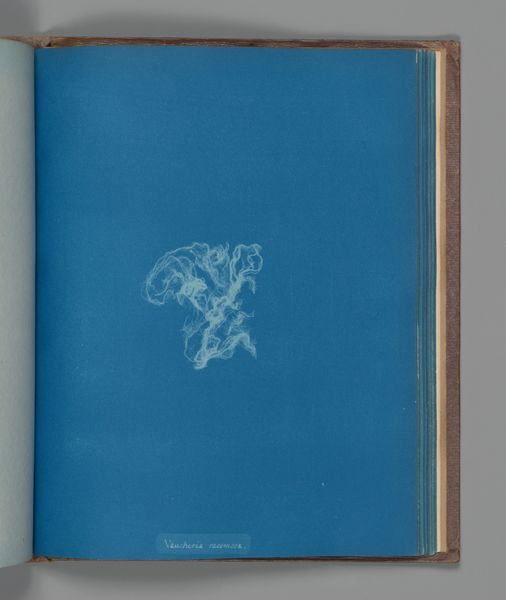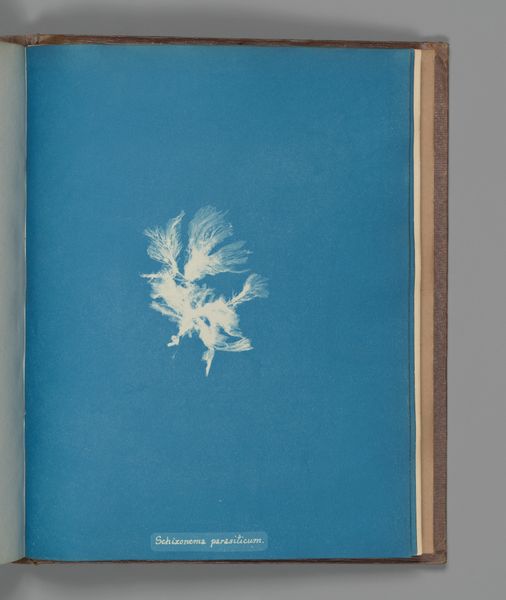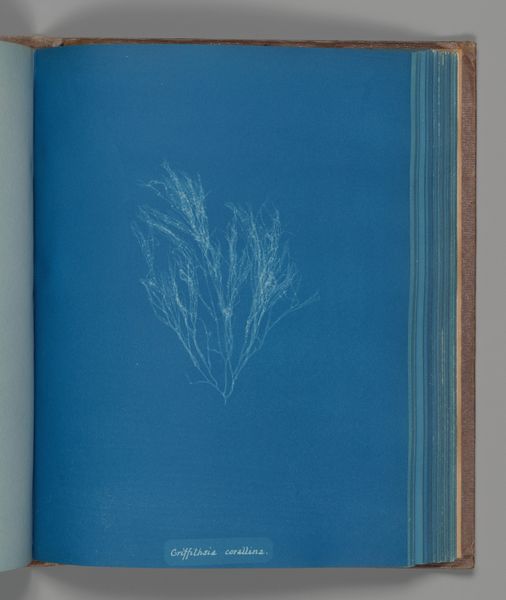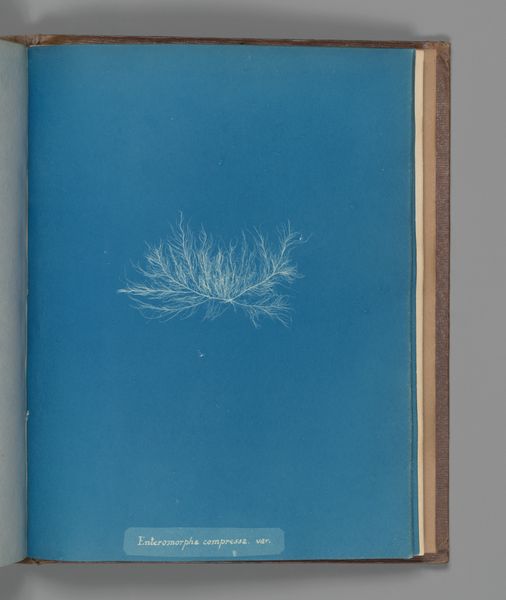
print, cyanotype, photography
#
still-life-photography
# print
#
cyanotype
#
photography
#
plant
Dimensions: Image: 25.3 x 20 cm (9 15/16 x 7 7/8 in.)
Copyright: Public Domain
Editor: Here we have Anna Atkin's "Enteromorpha clathrata" made sometime between 1851 and 1855. It's a cyanotype, a very striking photogram in vivid blues and whites, capturing the delicate structure of algae. What strikes me is how innovative she was in using photographic processes in service of scientific inquiry, especially in recording the exact structure of organic material. What’s your perspective on this image? Curator: I find it fascinating how this work straddles the line between science and art. The cyanotype process itself, using light-sensitive chemicals, points to a direct engagement with materiality and production. We must consider this image not only as a scientific document, but also an example of the labour and means involved. Consider Atkin’s class and the implications of accessing photographic chemicals and materials. Does her choice to record these natural forms challenge traditional boundaries between scientific illustration and artistic expression? Editor: It’s interesting that you highlight class! How did this photographic process democratize artistic creation and how it might have shifted social perspectives of labor involved in making an image? Curator: Precisely! The accessibility and relatively low cost of the cyanotype process might have offered opportunities for wider participation. What's compelling to me is how Atkin's work asks us to consider the social and economic implications of art making, pushing beyond conventional definitions of beauty or artistic skill. This work challenges established hierarchies by intertwining scientific precision with artistic expression and social commentary. Editor: That gives me a fresh understanding. Thank you for shining light on aspects that I’d previously overlooked. Curator: My pleasure! Hopefully, others will look into the making of "Enteromorpha clathrata," as it tells a richer story.
Comments
No comments
Be the first to comment and join the conversation on the ultimate creative platform.
